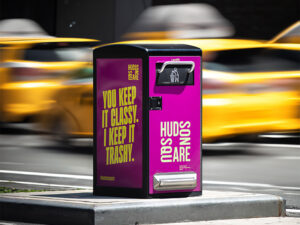
What defines a Smart City? Traditionally, a Smart City is a municipality that uses information and communication technology to make its critical infrastructure, services, and utilities more efficient and interactive, and at the same time builds awareness among residents to city services and related programs. The creation of a Smart City requires investments in human and social capital, communications infrastructure, and wise management of natural resources. This combination helps support sustainable economic development and higher quality of life for residents, visitors, and businesses.
Modern cities face many challenges accompanied by the corresponding opportunities: from providing a high quality of life to ensuring socio-economic development; from efficient and innovative business development to the reduction of crime. Central to successfully addressing challenges and capitalizing on opportunities is the adoption of innovative information and communication technologies.
By marrying technology, information, and vision into one common goal, Smart Cities can deliver dramatic improvements in core services. The development and adoption of new technologies and innovative processes form the cornerstone of most Smart City initiatives. When innovation and knowledge management are front and center, this can help make municipalities more livable, functional, competitive, and modern.
There are a handful of information and communication technologies essential to Smart City initiatives. Successes point to those initiatives that include the development of sustainable partnerships and cooperative strategies with key stakeholders as to ensure effective sharing of resources, citizens, businesses, and city leaders. So what are some of the technology driven movements making global cities smart?
The wide deployment of wired and wireless networks…
Deployed and accessible throughout the city and to all residents, visitors, and organizations. These networks support mobile and digital applications, smartphones, and smart devices and ‘things,’ as well as sensors and radio frequency identification (RFID) technology.
The use of smart devices…
Coupled with embedded systems and sensors to offer real-time data collection, analysis, and alerts. Combined with connectivity, such embedded intelligence is essential for urban development, improving critical infrastructure, and enabling new approaches to public transportation, vehicle & foot traffic management, and air & noise pollution, as well as the governance and delivery of public services such as health and safety (fire and police).
The development of smart urban spaces…
Leveraging information and communication technology for more efficient and sustainable services. These spaces vary in size but almost always have the opportunity to offer more efficient and sustainable value-added city services, infrastructures, and applications for data collection, processing, and dissemination. Think of energy-efficient buildings that use ‘smart’ meters and smart heating and cooling systems, electric car or device charging stations, free public space Wi–Fi, and connected neighborhood information kiosks. Cloud computing, M2M and IoT technologies, open data, and even media technologies further enhance the richness of Smart City initiatives.
The development of web-based applications and services…
Support the varied urban population include a mix of online services for the different city sectors: transportation, city government, utilities, security, education, health service, entertainment, tourism, etc. Sensors help with the creation and enhancement of:
- transportation services (arrival and departure of buses, trains, airplanes, taxis)
- parking space availability
- waste management and collection
- building management (monitoring of water and energy consumption, heating and air conditioning, lighting, and security)
- health services (information exchanges, electronic records, monitoring of elderly or disabled residents, etc.)
- public safety and security that is further enhanced by sensor-activated video surveillance
- e-commerce and entertainment
The goal is to create more efficient environments that support innovation and collaboration among stakeholders in a new ‘Internet’ framework that connects people (work flow, crowdsourcing, social networking), data (linking open data for analysis and reporting), services (delivery of cloud-based solutions, processes, tools and operations), and things (devices, sensors and appliances). Together with information technology, stakeholders can plan for and create smarter cities of today and tomorrow.



